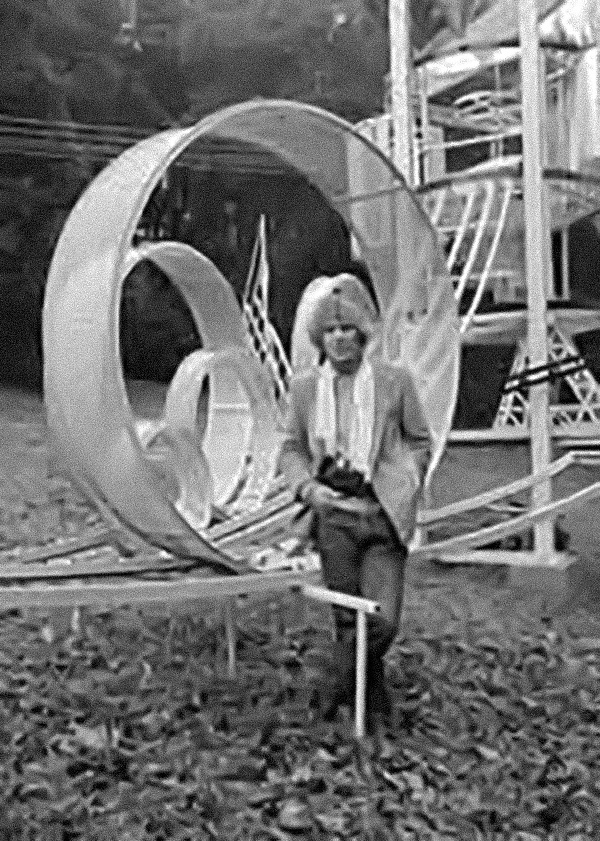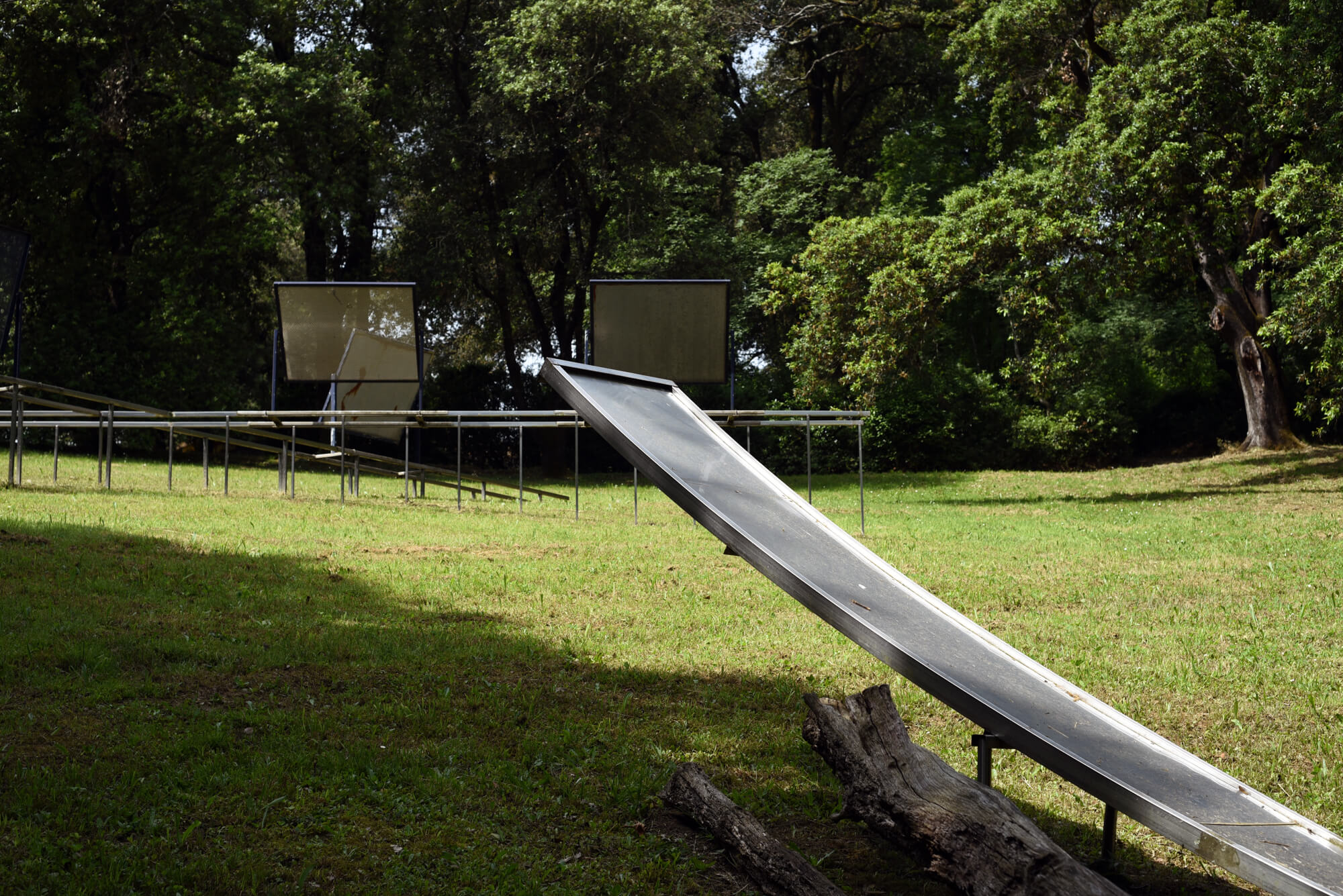Dennis Oppenheim (Electric City, Washington, 1938 – Manhattan, New York, 2011)
Dennis Oppenheim arrived at Celle along with the first artists invited in the early ’80s, and he chose an sloping field behind the open-air amphitheater as the place to create his artwork. The area was characterized by a dominant grassy slope extending under the branches of an enormous centuries-old oak tree located at the edge of the open field. The majestic presence of the tree influenced the artist even during the design process. In fact, the tall towers of his contraption, designed to launch fireworks, were conceived in relation to the oak tree. The highly articulated composition of the piece led Oppenheim to work extensively with local blacksmiths capable of sourcing and combining metals in various formats as required.






